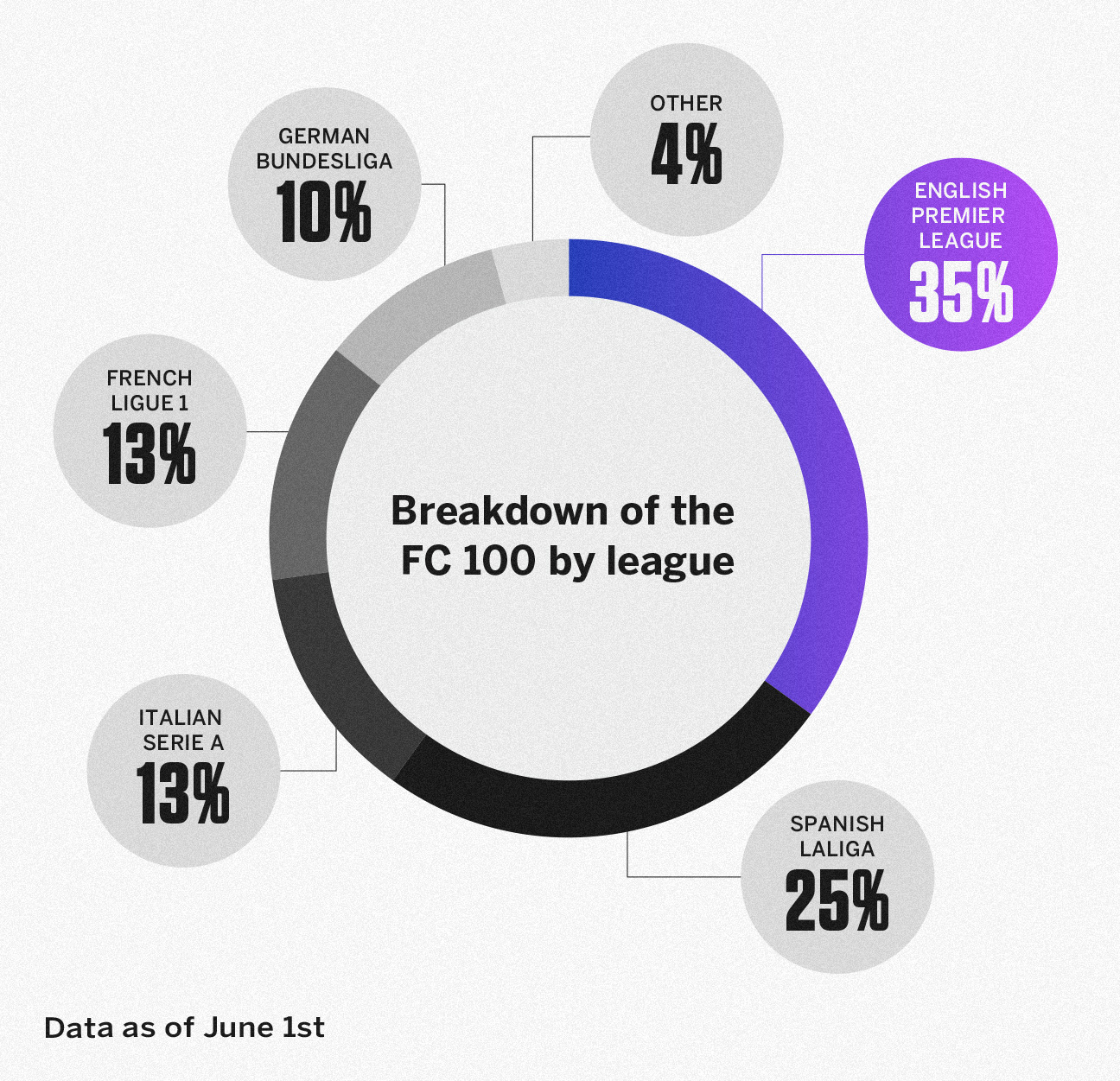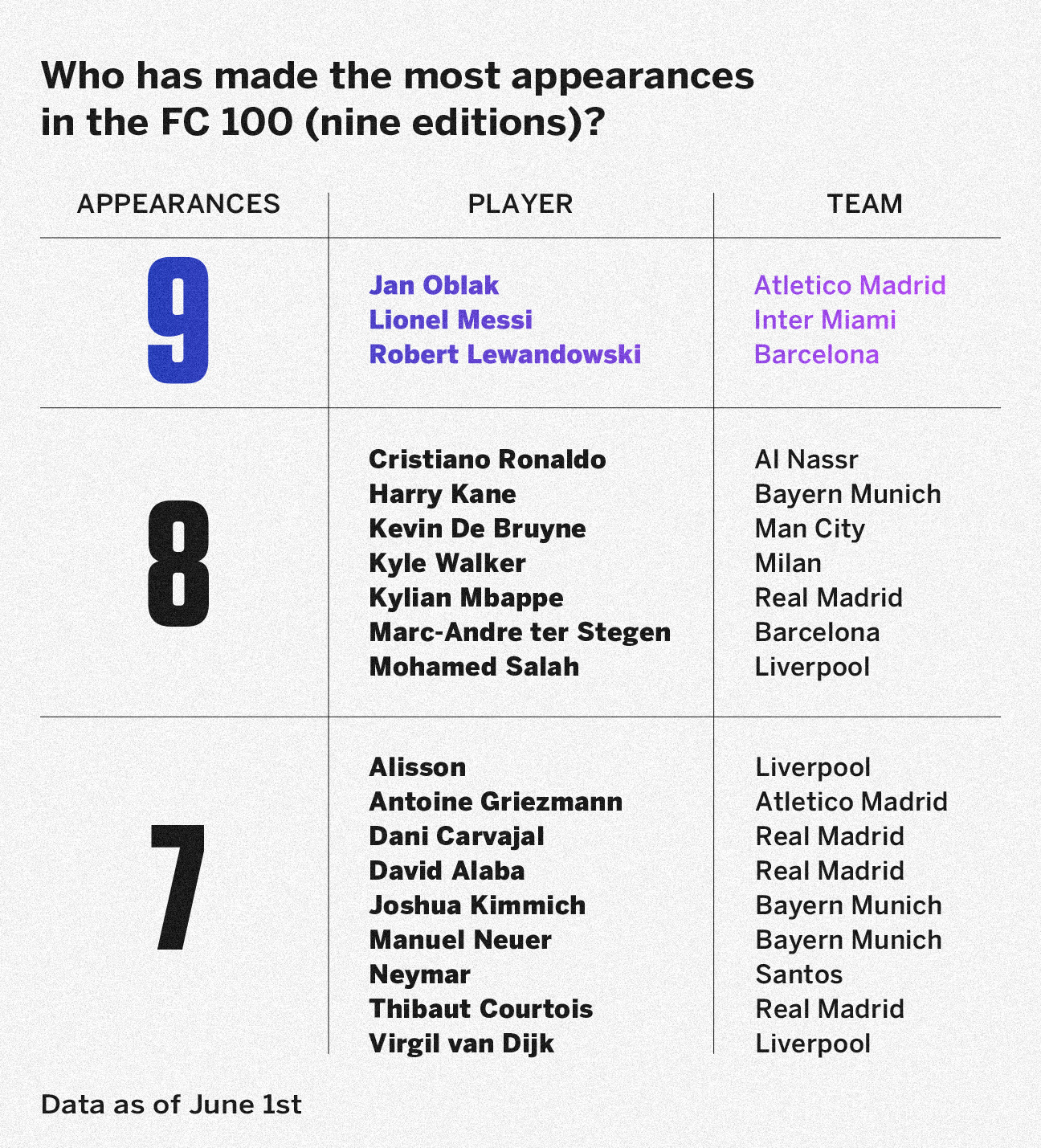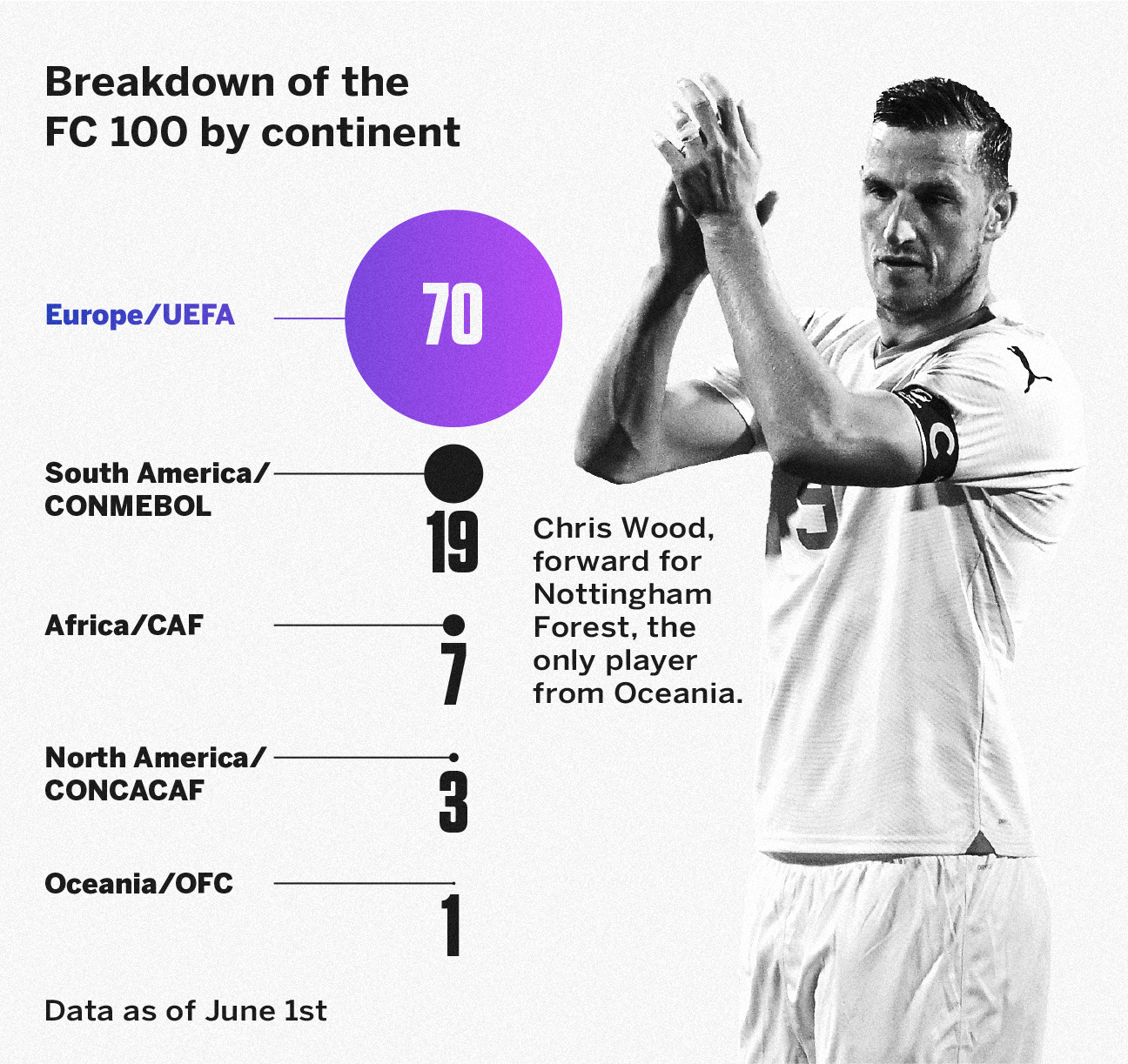It has been several weeks since the 2024-25 ESPN FC 100 — our ninth annual list of the world’s best players in men’s soccer — published, and it feels like so much has happened in the soccer world since. We’ve had several high-profile FC 100 names change clubs — such as Bayer Leverkusen duo Florian Wirtz (No. 2 attacking midfielder) and Jeremie Frimpong (No. 8 fullback) to Liverpool, Dean Huijsen (No. 10 center back) from Bournemouth to Real Madrid, Trent Alexander-Arnold (No. 2 fullback) from Liverpool to Real Madrid, Matheus Cunha (No. 16 center forward) from Wolves to Manchester United and Viktor Gyökeres (No. 8 center forward) from Sporting CP to Arsenal.
– Leaving Liverpool: Díaz transfer is a big gamble for Bayern
– Marcotti: August urgency will soon end the lull in soccer’s summer transfer window
– How Man United’s deal for Matheus Cunha warped the transfer market
We also saw a number of these stars ply their trade at the FIFA Club World Cup, from Inter Milan’s Lautaro Martínez (No. 5 center forward) and Real Madrid’s Aurélien Tchouaméni (No. 14 central midfielder) to Chelsea‘s Cole Palmer (No. 5 attacking midfielder) and, well, Paris Saint-Germain‘s entire first team (they topped the charts with a remarkable 11 players named to the list).
With the list still generating conversation, we thought we would break down the list as many ways as we could by looking at the data. Overall, this annual project really does show how the sport has evolved over time, with new generations emerging — and new teams dominating the rankings — as we prepare to give our final farewells to GOAT-level players such as Lionel Messi and Cristiano Ronaldo.
Club breakdown
Some of the FC 100 voting trends toward recent performance, especially as this list is intended as a “best right now and best this season” kind of referendum on the game. That is shown in the amount of turnover in this year’s list: A whopping 40 names made the FC 100 for the first time, which speaks to the game’s next generation truly breaking through. As part of that turnover, it’s hard to argue with Paris Saint-Germain topping the club charts after a remarkable season. They won all three domestic trophies (Ligue 1, Coupe de France, Trophée des Champions) and clinched their first UEFA Champions League title with a 5-0 shellacking of Inter Milan — who placed seven players on the FC 100.

PSG peaked at the right time, sweeping all comers in 2025 and getting Ballon d’Or-worthy contributions from Ousmane Dembélé (No. 5 winger) and Achraf Hakimi (No. 1 fullback) along the way.
It wasn’t all about the French side, however, when it comes to recognition for successful seasons. Liverpool won the Premier League title for the second time in four years and did so under new manager Arne Slot, with 10 players from his squad — including Mohamed Salah (No. 1 winger), Virgil van Dijk (No. 1 center back) and Alisson (No. 2 goalkeeper) — making the grade. Notable was the rise of the midfield in the Slot era, as Ryan Gravenberch (No. 9 central midfielder) capped a superb comeback season to make the FC 100 after many pundits felt he would be surplus to requirements under Slot, while Alexis Mac Allister (No. 4 central midfielder) took his own elite game to another level.
Spanish champions Barcelona placed eight on the FC 100 — including No. 1 central midfielder Pedri and No. 3 winger Raphinha — to crown a true return to form under manager Hansi Flick, and German champions Bayern Munich put five on the list (led by No. 3 center forward Harry Kane and No. 3 attacking midfielder Jamal Musiala) to reflect their return to the Bundesliga summit.
Perhaps speaking to the strength in depth across European soccer right now, it was notable to see 20 teams place one or two players on the list as stars emerge all over the continent. However, many of them (Huijsen, Cunha, Bryan Mbeumo) have already moved to bigger clubs, with others likely to follow after brilliant individual campaigns for medium-budget sides.
League breakdown
The Premier League’s depth all the way from first place to 20th has never been more evident than in its leaguewide transfer spending; the league frequently outspends its continental peers by several factors. In 2024-25, the Premier League spent nearly $3 billion in the transfer market, recouping $1.8 billion in outgoing players — LaLiga, by contrast, spent approximately $590 million last season across all 20 teams, and the German Bundesliga $791 million across 18 sides.

Thanks to the exploits of Victor Osimhen (No. 12 center forward, at Galatasaray), Lionel Messi (No. 8 winger, at Inter Miami), Cristiano Ronaldo (No. 15 center forward, at Al Nassr) and red-hot Viktor Gyökeres (No. 8 center forward, formerly at Sporting CP), we had four leagues outside the traditional European Big Five represented, which is something we don’t think we’ll see much once Messi and Ronaldo retire.
As ever in recent years, if you’re an elite player, you’re either in England, France, Spain, Italy or Germany.
The all-time list
Our favorite thing to track has been how the list has evolved while certain players seemingly never drop enough out of soccer’s elite tier to miss a single FC 100. As such, three players have remarkably made it in all nine editions to date — a quick poll in the office confirmed that these were not the obvious choices, either!
Lionel Messi has continued to deliver at a high level for Argentina, even if he had a couple of wobbly years with Paris Saint-Germain and moved to Major League Soccer, never dipping sufficiently to merit exclusion. (Ronaldo, his rival for GOAT honors in the modern era, famously missed the cut in 2022-23 due to his spectacular exile from Man United, loss of form for Portugal and move to Saudi Pro League side Al Nassr.)
Goalkeepers do rank highly in this graphic of longtime FC 100 entrants, with five of the 17 names listed plying their trade between the posts, and their longevity makes sense as players at the position tend to age more gracefully than others. But few could have guessed Jan Oblak (No. 5 goalkeeper) would be the position’s rep in the “nine-time club” — Atletico Madrid rarely break through the traditional Real Madrid-Barcelona hegemony in LaLiga, while Oblak’s international exploits with Slovenia rarely break the internet. However, he has performed at a consistently high level even if his club and country have not, while his fitness record has also allowed him to be an FC 100 mainstay. (Alisson has missed long periods of different seasons with leg injuries, while Thibaut Courtois, Marc-André ter Stegen and Manuel Neuer have all suffered long-term injuries that have caused them to miss entire seasons.)

The final nine-timer, Robert Lewandowski (No. 2 center forward), is a remarkable story considering his age (36) for such a bruising position up front. Yet he has been consistently prolific for both Bayern Munich (238 goals from 2014 to ’22) and Barcelona (2022-present), compiling arguably his best-ever season in 2024-25. His 42-goal haul (52 games, all competitions), including 11 goals in Barcelona’s run to the UEFA Champions League semifinals, was a major factor in their domestic treble (LaLiga, Copa del Rey, Supercopa de España).
The big question: Will any of them make it 10 in a row when we present the 2026 edition next June?
National teams
Again, it makes sense that much of the FC 100 is rooted in Europe, with a whopping 43 coming from the Big Five of England, Spain, Italy, France and Germany. Ably supplemented by a strong Dutch and Portuguese contingent perhaps is a preview as to which teams might dominate at next summer’s World Cup.

South America also continues to put forward plenty of talent, with 19 representatives (including Colombia and Bayern Munich’s Luis Díaz, the No. 12 winger). Use this map as a potential cheat sheet for the World Cup, because when it comes to that party, much of the list will again be focused around the traditional powerhouses above.
Continental dominance
Will we get another World Cup champion from Europe? The odds are stacked in the continent’s favor given the concentration of talent on the 2024-25 FC 100, with just fleeting mentions for Oceania (Chris Wood‘s heroic, career-best season at Nottingham Forest earned him No. 17 center forward honors) and the conference hosting next summer, Concacaf. Two Canadian stars (No. 5 fullback Alphonso Davies, No. 18 center forward Jonathan David) and one American (No. 18 winger Christian Pulisic) are the sole stars from the region, with no Mexico stars making the ranking yet again.

But don’t fill out your bets just yet — in the past three World Cups hosted in North America (Mexico 1970, Mexico 1986, USA 1994) we got a champion from South America, with Brazil‘s trophies in 1970 (over Italy) and 1994 (over Italy again!) bookending Argentina’s win over West Germany in the 1986 final.
